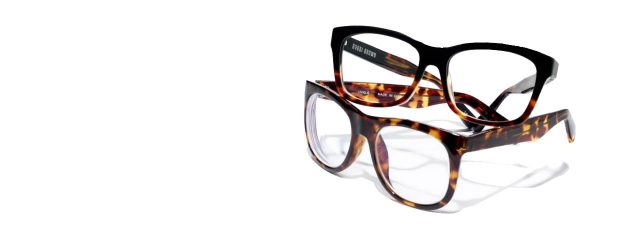
Modern eyewear serves a dual purpose. In addition to being a vision-correcting medical device used to enhance your safety and quality of life, eyeglasses have become a major fashion accessory. Therefore, when it comes to selecting eyeglasses there are many important factors to consider.
The Frame
Frames are made from a large variety of materials ranging from acetates and hard plastics to metals and metal alloys. The quality of frame materials is very high nowadays with many cutting-edge manufacturers investing heavily in developing new innovations and materials to make stronger, more flexible, lighter and more beautiful frames.
In considering the optimal material for your eyeglass frame, your lifestyle plays a big role. Children and those with active lifestyles require durable and flexible frames that are resistant to breaks from hits and falls. Those who have skin allergies need to seek out frames made from hypoallergenic materials such as acetate, titanium or stainless steel. Other characteristics of frame materials to consider are the weight or flexibility of the material as well as the price. Many designers also use wood, bone or precious metals to adorn frames and add an extra .
Hinges and nosepads also play an important role in durability and comfort of your frames. Children in particular can benefit from spring hinges and nosepads which can keep the frames from slipping off. Rimless or semi-rimless glasses are also an option for those that durability is not a primary concern.
Frame size is a very important factor in frame selection. Frames should fit well and not slip off the nose or be too tight and press against the temples or the sides of the nose.
More and more top fashion design brands are coming out with designer eyewear collections to suit every taste and style. Frames come in all colors, sizes and shapes so the choices are endless in finding a frame that suits your personal style and looks good with your face shape and coloring.
Lenses
In the past few years, we have seen increasingly accelerated revolutionary advances in ophthalmic lens technology. This means better vision, comfort, convenience, and safety for our patients. Lens materials have become lighter, thinner, stronger, less likely to scratch, clearer with less reflection, and cosmetically more appealing.
The best news is: you haven’t seen anything yet! Within the past several months, we have already witnessed the ability to custom design both single vision and progressive bifocal lenses for an individual patient. We now have computer driven lens surfacing technology which can design the periphery of a lens on a point-by-point basis and custom surface the lens on both the front and back surface. These are the first lenses which integrate how your own frame, face, and prescription work together.
Key Benefits:
- Clearer Vision
- Unlimited Frame Choices
- Wider Viewing Zones
- Lighter Weight
- Thinner Lenses
- Less Reflections and Distortion
Lens Materials:

Lens Types:

Eyeglasses Over 40
Once you approach age 40 you are likely to begin to experience presbyopia which is the loss of the ability to focus on close objects. This happens as the eye begins to age and can easily be corrected with reading glasses. However, if you already have an eyeglass prescription for distance vision, you will need a solution that enables you to see your best both near and far.
There are a number of options available for presbyopes including bifocals, multifocals and progressive lenses with new technology improving the options all the time. You should speak to your eye doctor about the best solution for your individual needs.
Whether they are for a child’s first pair, a second pair of designer frames or a senior with a complicated prescription, you should always consult with your eye doctor for a new pair of glasses. Ultimately, your eyeglasses have a job and that it to help you to see your best to get the most out of every day.
